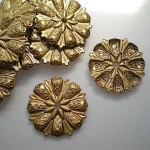What Does It Mean To Mirror An Image?
In the realm of digital images, mirroring refers to a fundamental image manipulation technique where an image is flipped along a specific axis, resulting in a reversed or reflected version of the original. This process can be likened to looking at your reflection in a mirror, where the image is reversed left to right. Mirroring is a widely used technique in various applications, ranging from photo editing and graphic design to computer vision and medical imaging.
Types of Image Mirroring
Image mirroring can be performed along two primary axes: horizontal and vertical.
- Horizontal Mirroring: This type of mirroring flips the image along its horizontal axis, effectively reversing the left and right sides. It's commonly used to create symmetrical images or to achieve a mirror-like effect. Imagine holding a photo up to a mirror; the reflection you see is a horizontally mirrored image of the original.
- Vertical Mirroring: In this instance, the image is flipped along its vertical axis, reversing the top and bottom portions. This technique is often employed to create a sense of disorientation or to generate a visually interesting effect. Think of looking at your reflection in a pool of water; the image appears flipped vertically.
Practical Applications of Image Mirroring
Image mirroring finds its application in a diverse range of fields, including:
- Photo Editing: Mirroring is a fundamental tool in photo editing software. It allows for minor adjustments like correcting the perspective of an image or creating artistic effects such as reflections. For instance, photographers often use horizontal mirroring to create a symmetrical composition in landscape photography.
- Graphic Design: Mirroring plays a crucial role in graphic design, especially in creating logos, symmetrical patterns, and reflective effects. By mirroring elements, designers can achieve balance, visual interest, and create a sense of depth in their creations.
- Computer Vision: In computer vision, mirroring is employed to generate synthetic data for training machine learning models. By mirroring existing images, researchers can expand the dataset and improve the accuracy of algorithms.
- Medical Imaging: In medical imaging, mirroring is used to generate mirrored images of organs or tissues for diagnostic purposes. This technique helps radiologists and physicians to better visualize the structures within the human body.
How Image Mirroring Works: A Technical Overview
At its core, image mirroring is a process of rearranging the pixels in an image to create a reflected representation. This rearrangement usually involves manipulating the image matrix, which is a mathematical representation of the image.
Let's consider a simple example: Imagine an image represented by a 2x2 matrix with pixel values as follows:
| 1 2 |
| 3 4 |
To horizontally mirror this image, we simply reverse the order of columns:
| 2 1 |
| 4 3 |
Similarly, to vertically mirror the image, we reverse the order of rows:
| 3 4 |
| 1 2 |
This simplistic example provides a basic understanding of how image mirroring is implemented through matrix manipulation. In reality, the process can be more complex, involving sophisticated algorithms and techniques, particularly for high-resolution images.

Reflection Of Light In A Mirror Lateral Inversion Physics

How To Mirror Your Iphone S Take Better Selfies Macrumors

Here S Why You Look Better In Mirrors Than Do Pictures Upworthy

Difference Between Real Image And Virtual With Practical S

Do People See You Inverted Your Questions Answered

Do People See You Inverted Your Questions Answered

Mirror On The Wall What Does Symmetry Mean To Us All

What Does It Mean He Sends Mirror Pics Tiktok Search

How To Tell If A Mirror Is Two Way Or Not 8 Steps With Pictures

Mirror On The Wall What Is Meaning Of It All Breakthrough Savvy With Trilby Johnson








